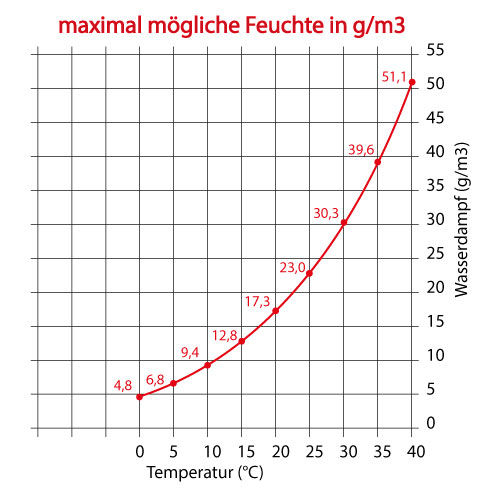humidity ...relatively speaking
- davinci-humidors
- Sep 14, 2023
- 3 min read
Updated: Sep 17, 2023
There exists a lot of confusion regarding the humidity within a humidor. Especially during hot summer months the effects can be puzzling. To dispel this confusion, we need to make a short excursus into the realm of physics.

Air can only hold a certain amount of water. This capacity is directly influenced by the temperature:
At 20°C, 1m³ of air can hold up to 17.3g of water, which corresponds to 100% relative humidity (rH).
rH = [17,3/17,3]*100 = 100%
rH = actual absolute humidity (g/m³) / maximum possible humidity (g/m³)
If the humidity exceeds this value, condensation will appear on humidor walls and cigars, visible as moisture and little droplets. A similar phenomenon is experienced by persons wearing glasses when entering a warm room with "cold" glasses. The surrounding air cools down and the excess moisture fogs up the glasses.
Conversely, if the humidor's temperature increases from 20°C to 25°C, the air's capacity to hold water rises from 17.3g to approximately 23g.
Since a humidor represents a closed space where no additional moisture is added the relative humidity (rH) decreases according to the formula:
rH = [17,3/23] = 75%
practical application:
Generally, we aim for around 70% rH for the well-being of our cigars. At 20°C this equals 12.1g (70% of 17.3g). On hotter days, when temperatures go up to 25°C, 100% humidity corresponds to 23g. But with only 12.1g present the rH drops from 70% to 52.6%.
rH = [12.1/23] = 52.6%
If the humidor is equipped with an active humidifier and stocked with moisture-absorbing wood and cigars, things start to get turbulent. The built-in humidifier, in its attempt to maintain 70% rH, releases more water. Over time, this gets you back to 70% rH, which means there are now 23g * 70% = 16.1g of water in the air, a quarter more than before.
As long as the temperature remains at 25°C everything is relatively stable. But during cool down periods (evenings or colder days approaching) when the temperature drops back to 20°C, there is still 16.1g of water in the air. While cigars and wood release moisture rapidly they only absorb back slowly. This causes rH to spike, sometimes even reaching beyond 90%. Such conditions are highly conducive to mold growth.
rF = [16/17,3] = 92,5%
If the humidor's mass is significantly larger than the volume of free air inside, the wood and cigars effectively stabilize the humidity and major fluctuations might not even be noticeable.
However, therein lies the root of the issue where cigars can become "spongy", flavours alter negatively, and signs like surface damage and white efflorescence might appear - despite the humidity display reading a stable 70%. The frequent fluctuations and absorption of additional moisture can exacerbate these issues.
What to do?
For table humidors Boveda packs are recommended. They have the necessary capacity to release and absorb moisture from the air. While they might react slowly they can stabilize rH within ±3%.
For active humidifiers as typically found in cabinets one trick is to slightly open the cabinet door during evenings when rH spikes. Some cabinets aren't completely airtight anyways and come with gaps that facilitate a mild exchange with ambient air, ensuring relatively stable rH.
A similar effect may be achieved by opening the door regularly for impact ventilation…
caveat: if you want to age your cigars, frequent air exchange can degrade the flavour!
Modern smart humidifiers take temperature and change of moisture behavior into account, releasing moisture conservatively to minimize such effects.
[For simplicity's sake the above examples use 1m³ of air volume inside the humidor.]
